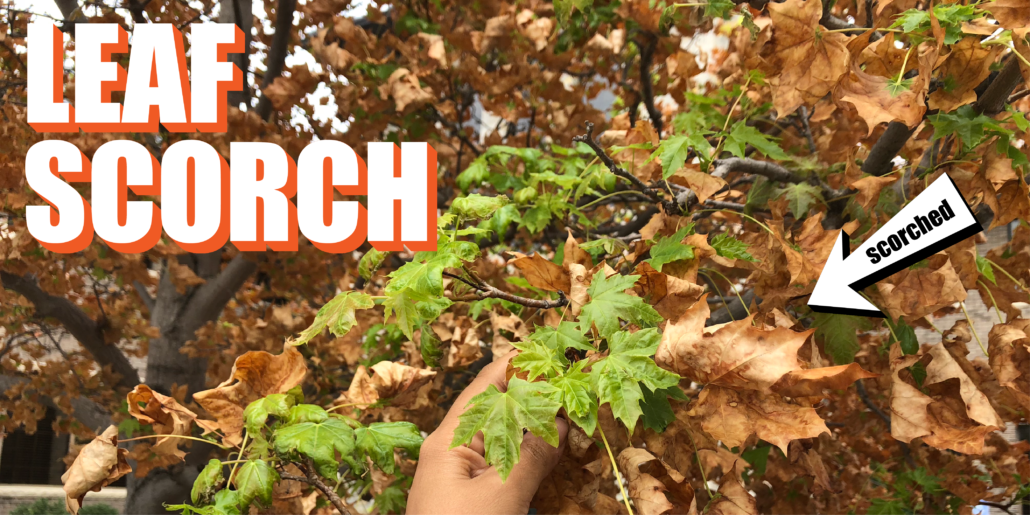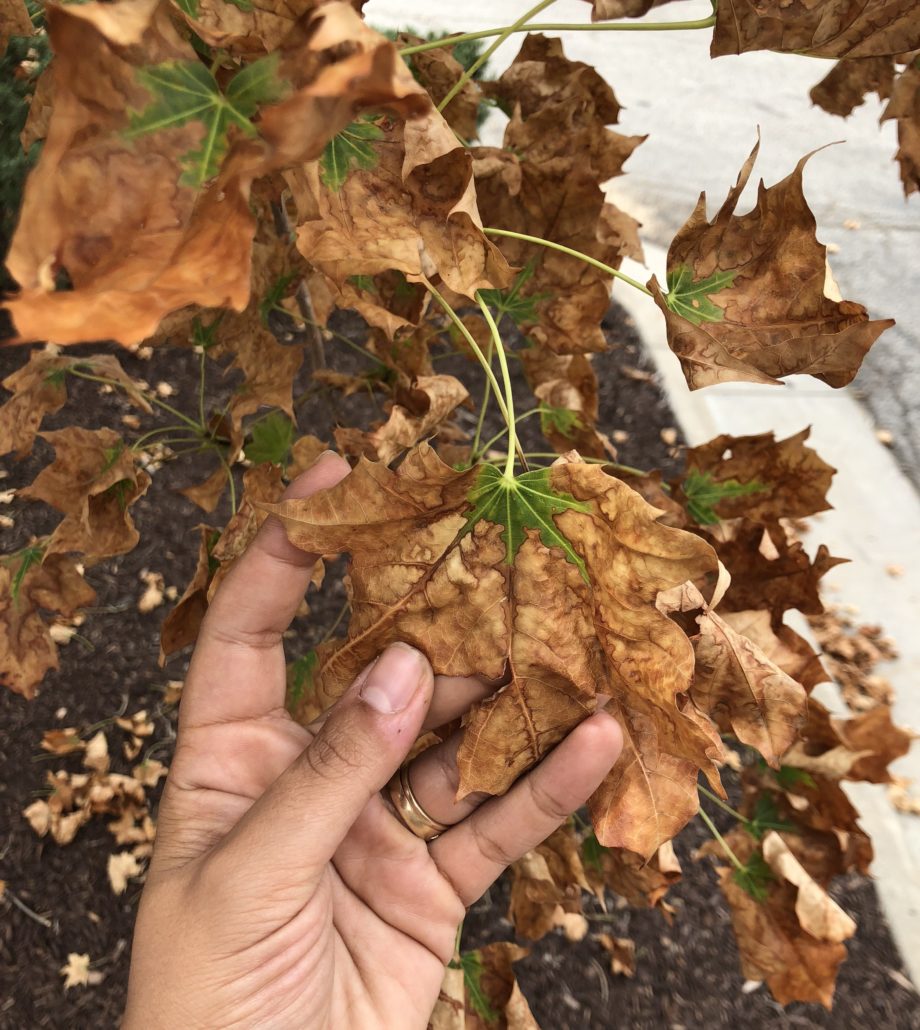Leaf Scorch: A Common Ailment in the Midwest

This summer has been brutally dry here in Northeast Kansas, and a lot of people have started to notice (and worry about) tattered leaves on their trees and shrubs. One common culprit that might be causing this damage is leaf scorch, a physiological and aesthetic condition brought on by unfavorable environmental conditions.
The good news is that leaf scorch is not an infectious disease and your trees can survive it if you keep up with the recommended cultural practices. Let’s take a closer look at what leaf scorch is, what the symptoms are, and how you can help control it.
What is leaf scorch?
Leaf scorch is not a disease, but rather it is physiological damage found on plant leaves caused by unfavorable environmental conditions, like these:
- Prolonged periods of high heat
- Prolonged periods of high wind
- Prolonged periods of diminished rainfall
When these environmental conditions align, a plant’s leaves will lose more moisture from evaporation than it can regain from the root system. And while leaf scorch is most commonly seen during periods of drought, it’s important to note that it can also be attributed to other issues affecting the plant’s root systems, such as:
- Shallow or restricted root space
- Heavily compacted soil
- Improper watering techniques
What are the most common symptoms of leaf scorch?
Symptoms will differ based on the type of plant, but the most common signs are browning on the margins of the leaves and yellowing between the leaf veins. These symptoms are a direct result of the lack of water available to the leaves. Symptoms will typically appear on the side of the plant that is most exposed to the sun and wind but can be present all the way around.
 Remember that scorch happens when large amounts of water evaporate from the leaf, so any tree or shrub could, in theory, be susceptible if the environmental conditions are right. That said, there are some plants that are more notorious for leaf scorch here in the Midwest. Here are a few of the more common ones:
Remember that scorch happens when large amounts of water evaporate from the leaf, so any tree or shrub could, in theory, be susceptible if the environmental conditions are right. That said, there are some plants that are more notorious for leaf scorch here in the Midwest. Here are a few of the more common ones:
- Japanese maple
- Sugar maple
- Rhododendron
- Viburnum
How can leaf scorch be controlled?
Because we are unable to control environmental factors, the best way to try to control or prevent leaf scorch is to keep up with the recommended cultural practices.
- Provide deep, supplemental watering rather than frequent, shallow watering. We recommend using the hose to provide a slow-and-steady soak period, especially in periods of prolonged drought.
- Use mulch to help retain moisture in the soil around the base of the plant. Mulch does a great job of keeping the soil cool and evenly damp. Be sure to consider whether you’re using rock mulch or organic mulch, as these will retain water differently.
- Fertilize your trees and shrubs with the nutrients they need, when they need it. Doing so will help keep your plants healthy and resilient. For more information on this, check out one of our past blog posts called “Are Your Trees and Shrubs Getting the Nutrients They Need?”
Contact the experts at Topeka Landscape!
If you have questions about what you’ve read here today, or if you are looking for help in keeping your landscape in great condition, our team of experts is here to help. Fill out a contact form online, anytime, and we’ll get back with you ASAP!
We have been providing top-tier landscape, irrigation, construction, and maintenance services to our customers since 1994. To check out our full list of residential services, click here.
